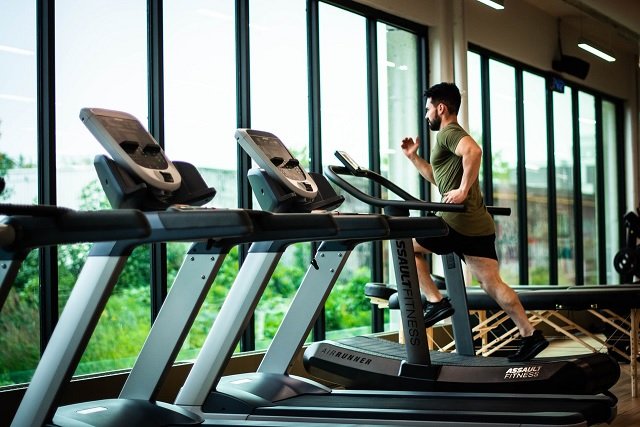Operating a fitness studio involves numerous legal considerations and potential liabilities. Understanding and addressing these aspects are crucial for ensuring the safety of clients and staff, maintaining a positive reputation, and protecting the business from costly legal disputes. This comprehensive guide covers key legal considerations and strategies for liability prevention in fitness studios.
Understanding Liability in Fitness Studios
Liability refers to the legal responsibility that a fitness studio has to ensure the safety and well-being of its clients and staff. If a client or employee is injured or harmed due to the studio’s negligence, the studio can be held legally accountable. Liability can arise from various situations, such as accidents, equipment failure, inadequate supervision, or failure to follow safety protocols.
Types of Liability
Fitness studios can face several types of liability, including:
- Premises Liability: Relates to injuries that occur on the studio’s property due to unsafe conditions.
- Product Liability: Involves injuries caused by defective or malfunctioning equipment.
- Professional Liability: Arises from claims of negligence or improper instruction by trainers and staff.
- Employment Liability: Includes issues related to employee safety, discrimination, and wrongful termination.
Key Legal Considerations for Fitness Studios
- Health and Safety Regulations
Fitness studios must comply with local, state, and federal health and safety regulations to minimize risks and ensure a safe environment. These regulations cover various aspects, including facility cleanliness, equipment maintenance, and emergency procedures.
- Compliance: Regularly review and adhere to applicable health and safety standards. This includes ensuring that the facility is clean, equipment is well-maintained, and safety protocols are in place.
- Inspections: Conduct regular safety inspections to identify and address potential hazards. Document these inspections to demonstrate compliance and proactive risk management.
2.Informed Consent and Waivers
Obtaining informed consent and waivers from clients is a critical step in liability prevention. These documents help protect the studio by making clients aware of the inherent risks associated with physical activity and acknowledging their responsibility.
- Informed Consent: Clearly explain the potential risks and benefits of participating in fitness activities. Ensure that clients understand and voluntarily agree to these risks.
- Waivers: Have clients sign liability waivers that release the studio from responsibility for certain types of injuries. While waivers cannot protect against gross negligence, they can provide a layer of protection against claims of ordinary negligence.
- Professional Certifications and Training
Ensuring that trainers and staff have the necessary qualifications and certifications by means of doing an accredited personal trainer course is essential for legal compliance and client safety. Properly trained staff can provide safe and effective instruction, reducing the risk of injuries.
- Certifications: Require trainers to hold certifications from recognized organizations, such as the American Council on Exercise (ACE) or the National Academy of Sports Medicine (NASM). Additionally, encourage ongoing education to stay updated on best practices.
- Staff Training: Implement a comprehensive training program for all staff members. This should include instruction on proper exercise techniques, equipment usage, emergency procedures, and client communication.
- Employment Laws and Regulations
Fitness studios must comply with employment laws and regulations to avoid legal disputes related to employee rights and workplace safety.
- Wages and Hours: Ensure that employees are paid fairly and in accordance with labor laws. This includes adhering to minimum wage requirements, overtime pay, and proper record-keeping.
- Discrimination and Harassment: Maintain a workplace free from discrimination and harassment. Implement policies that promote diversity, equity, and inclusion, and provide training to prevent and address inappropriate behavior.
- Workers’ Compensation: Obtain workers’ compensation insurance to cover employees who are injured or become ill as a result of their job. This insurance provides medical benefits and wage replacement while protecting the studio from employee lawsuits.
5. Client Data Privacy
With the increasing use of digital systems for client management and communication, protecting client data privacy is a significant legal consideration. Fitness studios must comply with data protection regulations, such as the General Data Protection Regulation (GDPR) and the California Consumer Privacy Act (CCPA).
- Data Security: Implement robust security measures to protect client information from unauthorized access, breaches, and theft. This includes using secure software, encrypting sensitive data, and regularly updating security protocols.
- Privacy Policies: Develop and communicate clear privacy policies that outline how client data is collected, used, and protected. Ensure that clients understand their rights and how their information will be handled.
Strategies for Liability Prevention
- Develop Comprehensive Policies and Procedures
Creating and enforcing comprehensive policies and procedures is fundamental to preventing liability. These documents should cover all aspects of studio operations, from safety protocols to client interactions.
- Safety Protocols: Develop detailed safety protocols for equipment usage, exercise instruction, and emergency situations. Train staff to follow these protocols diligently.
- Incident Reporting: Implement a system for reporting and documenting incidents, such as injuries or equipment malfunctions. Analyzing these reports helps identify trends and improve safety measures.
- Client Communication: Establish guidelines for clear and effective communication with clients. This includes explaining exercises, addressing concerns, and providing feedback.
- Maintain Adequate Insurance Coverage
Insurance is a critical component of liability prevention, providing financial protection against potential claims and legal expenses.
- Types of Insurance: Ensure that the studio has comprehensive insurance coverage, including general liability, professional liability, property insurance, and workers’ compensation.
- Review and Update: Regularly review insurance policies to ensure they provide adequate coverage as the business grows and evolves. Update policies as needed to address new risks or changes in operations.
3. Implement Regular Staff Training
Ongoing staff training is essential for maintaining a safe and compliant fitness studio. Regular training ensures that staff are knowledgeable about safety protocols, emergency procedures, and client care.
- Initial Training: Provide thorough initial training for all new staff members. This includes orientation on studio policies, safety protocols, and proper exercise techniques.
- Continuing Education: Encourage staff to pursue continuing education opportunities, such as certifications and workshops. For instance, enrolling staff in a personal trainer course can enhance their skills and knowledge, ensuring they provide safe and effective instruction.
- Foster a Culture of Safety and Accountability
Creating a culture of safety and accountability within the fitness studio involves engaging both staff and clients in maintaining a safe environment.
- Leadership Commitment: Demonstrate a commitment to safety from the top down. Leaders should prioritize safety in all aspects of the business and lead by example.
- Open Communication: Encourage open communication about safety concerns. Provide channels for staff and clients to report hazards or suggest improvements without fear of repercussions.
- Recognition and Rewards: Recognize and reward staff and clients who contribute to maintaining a safe environment. This can include acknowledging those who identify risks, follow safety protocols diligently, or assist in implementing safety measures.
- Stay Informed and Adapt
The legal landscape is constantly evolving, and staying informed about changes in regulations and industry best practices is crucial for liability prevention.
- Regular Updates: Stay updated on relevant laws and regulations that affect fitness studios. Subscribe to industry newsletters, attend conferences, and participate in professional organizations to keep abreast of developments.
- Adaptation: Be prepared to adapt policies and procedures to comply with new regulations or industry standards. Regularly review and update the studio’s risk management plan to ensure it remains effective and relevant.
Conclusion
Legal considerations and liability prevention are integral to the successful operation of fitness studios. By understanding and addressing these aspects, studio owners can create a safe environment for clients and staff, protect the business from costly legal disputes, and maintain a positive reputation.
Developing comprehensive policies and procedures, maintaining adequate insurance coverage, implementing regular staff training, fostering a culture of safety and accountability, and staying informed about regulatory changes are key strategies for managing liability effectively. Additionally, investing in continuous education, such as enrolling staff in a personal trainer course, enhances their skills and ensures they provide safe and effective instruction.
By prioritizing these strategies, fitness studios can navigate the complex legal landscape, minimize risks, and achieve long-term success.



